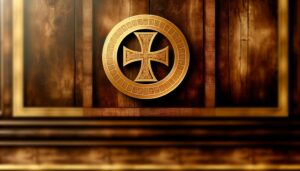Iconic Symbols of Life: Their Drawings and Meanings
The symbol of life, exemplified by the Egyptian Ankh, Mesopotamian Tree of Life, and Taoist Yin-Yang, carries profound historical and cultural significance. In ancient Egypt, the Ankh symbolized eternal life and divine power, frequently used in rituals and funerary practices.
The Mesopotamians revered the Tree of Life, representing interconnectedness and the cyclical nature of existence. Meanwhile, the Yin-Yang embodies duality and balance in the natural world.
These symbols offer deep interpretive insights into the spiritual and philosophical perspectives of different cultures, posing as rich, narrative emblems transcending time. Exploring their origins and meanings reveals their enduring impact on human experience.

Key Takeaways
- The Ankh symbolizes eternal life and divine power in Ancient Egypt, combining a cross with a loop.
- The Tree of Life represents interconnectedness and the cyclical nature of existence in various cultures.
- The Yin-Yang symbol in Taoist philosophy illustrates balance and harmony through the interdependence of opposing forces.
- The Celtic Triskelion signifies the cycle of life, death, and rebirth, reflecting the interconnectedness of these stages.
- Symbols of life, such as the Ankh and Tree of Life, transcend cultural origins to carry profound personal and spiritual significance.
Ancient Origins
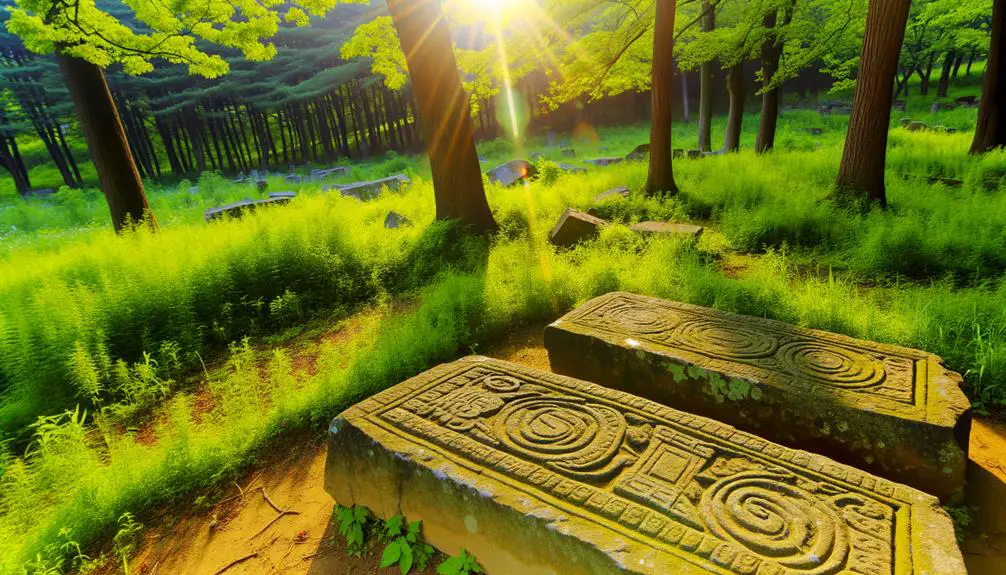
Rooted in the annals of human civilization, the concept of a 'symbol of life' can be traced back to ancient cultures such as Egypt and Mesopotamia, where it held profound religious and philosophical significance.
In Egypt, the ankh symbolized eternal life and was often depicted in the hands of deities, underscoring its divine nature.
Mesopotamian civilizations revered the Tree of Life, a motif symbolizing interconnectedness and immortality.
These symbols were not mere artistic representations but imbued with deep spiritual essence, reflecting the civilizations' cosmological views and existential beliefs. They were integral to rituals, funerary practices, and depicted in sacred texts, underscoring their pivotal role in shaping ancient human understanding of life, death, and the beyond.
Cultural Variations
Throughout history, various cultures have developed unique symbols of life, each reflecting distinct philosophical, religious, and existential perspectives. These symbols serve as lenses through which societies interpret the essence of existence and longevity.
- Egyptian Ankh: Known as the 'key of life,' the Ankh symbolized eternal life and was deeply associated with the gods and the afterlife.
- Celtic Triskelion: Representing the triad of life, death, and rebirth, the Triskelion embodies the cyclical nature of existence and spiritual growth in Celtic tradition.
- Chinese Yin-Yang: This symbol illustrates the balance of opposing forces, encapsulating the harmony and dynamic interplay between life's dualities.
These symbols highlight how diverse cultures conceptualize life's continuity, balance, and cyclical nature.
Spiritual Significance
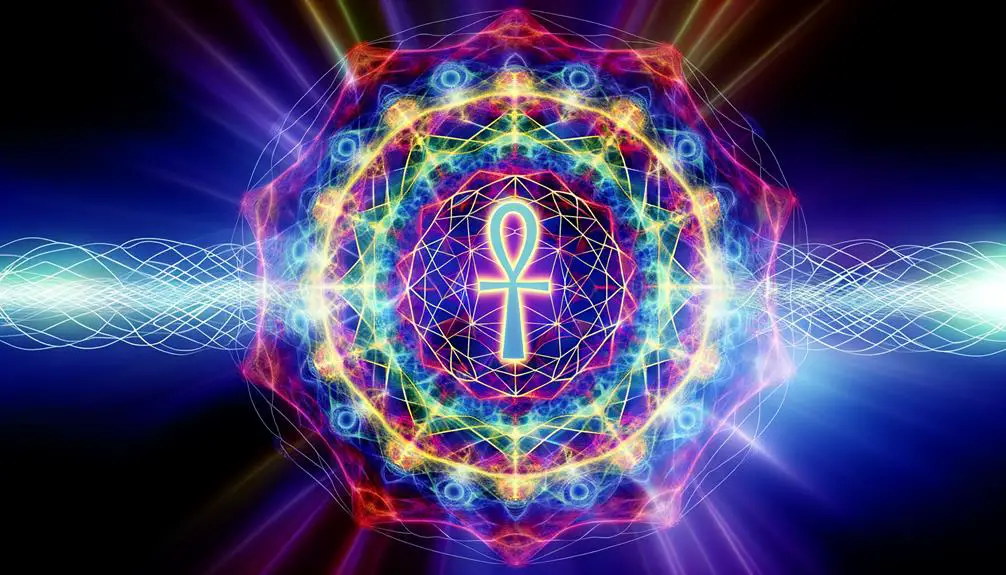
The spiritual significance of symbols of life extends far beyond their visual representation, delving into the domains of metaphysical beliefs, existential reflections, and the human quest for understanding our place in the universe.
Historically, these symbols, such as the Ankh in ancient Egypt or the Tree of Life in various cultures, have served as conduits for expressing the continuity of life, death, and rebirth.
These symbols often embody an interpretive insight into the eternal and cyclic nature of existence, providing a framework for comprehending human experiences and spiritual aspirations.
Artistic Techniques
Various artistic techniques have been employed to depict symbols of life, ranging from intricate carvings in ancient monuments to contemporary digital renderings, each method reflecting the technological advancements and cultural contexts of its time. These techniques can be examined through several lenses:
- Historical Carvings: Ancient civilizations, such as the Egyptians, used carvings on stone to immortalize the ankh, symbolizing life and eternity.
- Medieval Manuscripts: Illuminated manuscripts of the Middle Ages often featured life symbols, meticulously painted with natural dyes and gold leaf.
- Digital Art: Modern digital tools allow artists to create intricate life symbols with precision and versatility, blending historical motifs with contemporary styles.
Each technique not only represents artistic skill but also conveys cultural values and societal beliefs about life.
Modern Interpretations
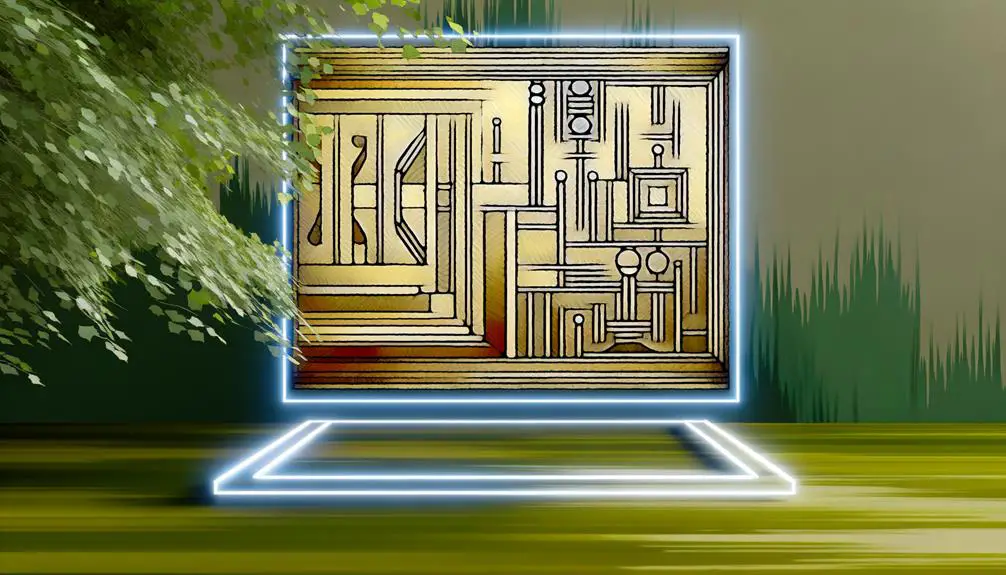
Modern interpretations of the symbol of life reflect a rich tapestry of cultural symbolism, where ancient motifs are reimagined to resonate with contemporary societal values.
Artistic representations have evolved, incorporating digital mediums and abstract forms to convey life's essence in ways that align with today's aesthetic sensibilities.
Moreover, these symbols often serve as profound connections to personal identity, enabling individuals to express their unique life experiences and philosophical beliefs.
Cultural Symbolism Today
Frequently, contemporary interpretations of life symbols are influenced by a blend of historical context and evolving societal values, reflecting a dynamic interplay between tradition and modernity.
Modern cultural symbolism often reinterprets ancient motifs to resonate with current social and environmental concerns. For instance:
- Tree of Life: Historically representing growth and interconnectedness, today it also symbolizes ecological awareness and sustainability.
- Ankh: Originally an Egyptian symbol of eternal life, it now often signifies personal empowerment and spiritual awakening in modern contexts.
- Yin-Yang: Rooted in Taoist philosophy, this symbol's contemporary usage emphasizes balance and harmony within diverse aspects of life, from mental health to work-life balance.
These interpretations showcase how life symbols adapt, maintaining relevance across generations.
Artistic Representations Evolved
Contemporary artistic representations of life symbols often blend traditional iconography with innovative techniques, reflecting both historical roots and modern aesthetic sensibilities. Artists draw from ancient emblems, infusing them with contemporary materials and digital media to create layered meanings. This synthesis offers a nuanced dialogue between past and present, as seen in multimedia installations or digital paintings.
| Traditional Symbol | Modern Technique | Interpretation |
|---|---|---|
| Ankh | Digital Illustration | Eternal life in cyberspace |
| Tree of Life | Mixed Media Sculpture | Interconnectedness in urban contexts |
| Ouroboros | Augmented Reality (AR) | Infinite cycles in modern life |
These modern interpretations preserve the essence of life symbols while engaging with today's artistic and technological advancements, creating a bridge across time.
Personal Identity Connection
Exploring how life symbols are reinterpreted in modern contexts reveals a profound interconnectedness between personal identity and cultural heritage. This phenomenon is evident in contemporary art, fashion, and digital media, where ancient symbols are repurposed to reflect individual and collective narratives.
Such reinterpretations bridge the past and present, allowing people to express their unique identities while honoring historical roots.
- Contemporary Art: Artists integrate traditional symbols with modern aesthetics to convey personal stories and societal issues.
- Fashion: Designers use life symbols in clothing and accessories, merging cultural heritage with contemporary style.
- Digital Media: Online platforms facilitate the widespread sharing of symbolic imagery, fostering a global dialogue about identity and tradition.
These modern interpretations underscore the dynamic nature of cultural symbols in shaping personal identity.
Symbolism in Nature
Throughout history, natural elements have been imbued with profound symbolic meanings, reflecting the deep connection between humanity and the natural world. Ancient civilizations like the Egyptians revered the sun as a symbol of life and rebirth, while the Greeks saw the olive tree as a representation of peace and prosperity.
This symbolic interplay underscores humanity's reliance on nature for sustenance and spiritual guidance. In Eastern traditions, the lotus flower signifies purity and enlightenment, emerging from murky waters to bloom beautifully. Such symbols manifest in art, literature, and rituals, serving as metaphors for human experiences and aspirations.
Popular Symbols
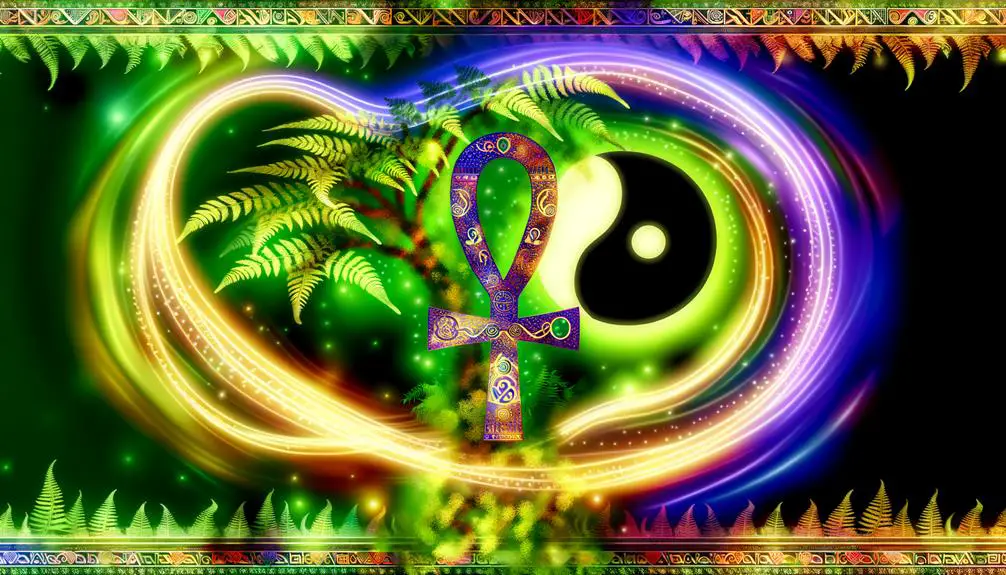
Building upon humanity's profound connection with nature, certain symbols have transcended their origins to become universally recognized emblems of life, belief, and identity. Historically, these symbols have carried deep meanings, serving as conduits to cultural and spiritual understanding.
For instance:
- The Tree of Life: Originating in ancient Mesopotamia, this symbol represents interconnectedness and the cyclical nature of life, reflected in various religions and philosophies.
- The Ankh: An ancient Egyptian symbol denoting eternal life, it combines the cross with a loop, symbolizing the union of male and female.
- The Yin-Yang: Rooted in Taoist philosophy, it embodies duality and balance, illustrating how opposing forces are interconnected and interdependent in the natural world.
These symbols encapsulate profound historical and cultural narratives, enriching human experience.
Personal Meanings
Personal meanings of life symbols often arise from the interplay between cultural interpretations and individual significance.
Historically, symbols such as the ankh or the tree of life transcend their origins to resonate deeply with personal experiences and beliefs.
Analyzing these symbols through the lens of both collective heritage and personal narrative offers a profound understanding of their multifaceted impact.
Cultural Interpretations
Across various cultures, the symbol of life has been imbued with distinct personal meanings that reflect the unique historical and social contexts of each society. This diversity can be observed through several culturally specific symbols:
- The Ankh in Ancient Egypt: Representing eternal life, the Ankh was deeply tied to the pharaohs and gods, symbolizing their divine power and immortality.
- The Tree of Life in Norse Mythology: Known as Yggdrasil, it connects the nine worlds and signifies interconnectedness, fertility, and the cycle of life and death.
- The Taoist Yin-Yang: This symbol embodies balance and harmony, reflecting the duality and interdependence of all life forces.
These examples illustrate how symbols of life acquire unique meanings shaped by cultural narratives and belief systems.
Individual Significance
Often intertwined with deeply personal experiences and introspections, the individual significance of life symbols transcends their cultural origins, allowing them to serve as potent emblems of personal journeys, beliefs, and aspirations.
Historically, symbols such as the Ankh or the Tree of Life have been laden with collective meanings, yet their resonance on a personal level offers a unique interpretive depth. For instance, while the Tree of Life universally represents interconnectedness, an individual might imbue it with personal struggles and growth, transforming it into a symbol of resilience.
This dual-layered significance—rooted in both historical context and personal narrative—enriches the symbol, making it a dynamic representation of one's evolving life story and inner landscape.
Future Trends
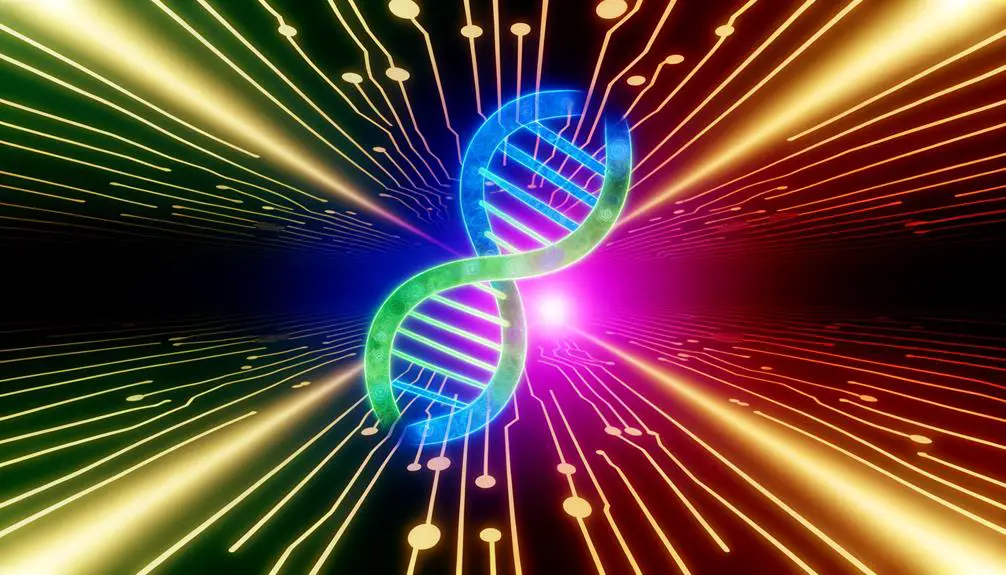
Anticipating future trends, the evolution of the symbol of life in visual art and cultural expressions is likely to be influenced by technological advancements and global interconnectedness. Historically, symbols have morphed through societal shifts and technological innovations, from ancient hieroglyphs to digital icons.
As we move forward, several trends are anticipated:
- Augmented Reality (AR) Integration: Enhancing traditional symbols with interactive elements.
- Cultural Hybridization: Merging diverse life symbols due to increased cross-cultural interactions.
- Sustainable Design: Utilizing eco-friendly materials for symbol creation, reflecting a global emphasis on sustainability.
This detailed analysis underscores how historical context and interpretive insight inform our understanding, predicting a transformative future for life symbols in a digitally interconnected world.
Conclusion
In tracing the symbol of life from its ancient origins to contemporary interpretations, it becomes evident that this emblem serves as a multifaceted tapestry woven with threads of cultural, spiritual, and artistic significance.
Just as roots sustain a tree, the enduring relevance of life symbols draws nourishment from deep historical contexts and varied personal meanings.
Future trends will likely continue to adapt these symbols, reflecting the evolving human quest for understanding and connection within the natural world.


